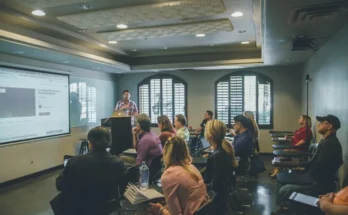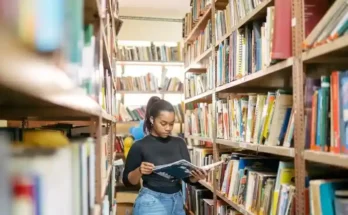Education has always been the cornerstone of civilization. From ancient philosophers gathering students beneath olive trees to today’s AI-assisted classrooms, the way we teach and learn continues to evolve. But despite centuries of development, a bold question hangs in the air: Is our education system truly preparing us for the world we live in—or the world we’re heading toward?
In an age marked by rapid technological advancement, climate uncertainty, and shifting job landscapes, the traditional methods of education are being reexamined. Today’s learners need more than memorized facts or flawless grades—they need resilience, creativity, critical thinking, and emotional intelligence. Education is no longer just about information. It’s about transformation.
How Education Was Designed?
To understand where education is going, we must first understand where it came from. Most modern education systems were designed during the Industrial Revolution, a time when society needed factory workers, clerks, and functionaries. Schools mirrored factories: uniform rows, strict schedules, standardized testing, and one-size-fits-all teaching.
This model focused on efficiency and conformity. Success was measured by obedience and the ability to retain knowledge. Creativity was often considered a distraction, and failure was punished, not explored. While this system produced results in the past, its structure is beginning to crack under the weight of 21st-century needs.
Today’s world is dynamic, unpredictable, and deeply interconnected. Simply producing individuals who follow instructions is no longer enough. We need education to foster innovation, empathy, adaptability, and ethical awareness—traits machines can’t replicate and algorithms can’t teach.
The Rise of Holistic Education:
Holistic education is not a trend—it’s a return to the roots of true learning. It acknowledges that students are not empty vessels to be filled with data but full humans with emotions, aspirations, and unique ways of understanding the world.
-
Learning for Life, Not Just for Exams
Grades may open doors, but wisdom keeps them open. Holistic education emphasizes real-life skills alongside academic content. Students are encouraged to explore, ask questions, fail safely, and grow from their experiences. They learn how to learn, rather than what to memorize.
This approach develops not only cognitive abilities but emotional and social intelligence as well. It equips students with tools to face life’s inevitable uncertainties, from career changes to personal loss, with resilience and resourcefulness.
Technology in the Classroom:
Technology has revolutionized education. From virtual classrooms to AI tutors, it has made learning more accessible and personalized. Students in remote villages can attend lectures from Ivy League professors, and children with learning differences can now access adaptive software that meets them where they are.
-
Personalization and Accessibility
One of the greatest advantages of tech-based learning is personalization. Adaptive platforms track a student’s progress and adjust material in real-time. For students who struggle in traditional settings, this can be life-changing.
Moreover, online learning has broken down barriers. Education is no longer confined to a physical location or limited by the number of available teachers. Anyone with an internet connection can access a world of knowledge.
-
The Risk of Digital Overload
But technology, like any tool, is only as good as how it’s used. When over-relied upon, screens can disconnect rather than connect. Students may lose touch with interpersonal skills, creativity, and even attention spans. The challenge is balance—using tech to empower learning without letting it replace human interaction or the joy of discovery.
Reimagining the Role of the Teacher:
In this evolving educational landscape, the role of the teacher is shifting from information provider to facilitator, mentor, and guide. The best teachers today don’t just teach content—they inspire curiosity, provoke thought, and nurture confidence.
In a world where information is available with a simple search, students need someone to help them understand it, question it, and apply it meaningfully. Teachers become mentors who challenge students to think critically and connect knowledge across disciplines.
This mentorship model also humanizes education. It brings back the relational aspect of learning, where students feel seen, heard, and encouraged to grow—not just perform.
Rethinking Assessment:
If education is evolving, assessments must too. Relying solely on standardized tests and numerical grades does a disservice to the complexity of human intelligence.
Some students excel in math, others in art, leadership, empathy, or problem-solving. A single exam cannot capture the range of abilities that students possess. Alternative assessments—such as portfolios, peer evaluations, project-based learning, and reflective journals—offer a more complete picture.
These approaches also teach students to value progress over perfection. They learn to view feedback as a tool for growth rather than a measure of self-worth. In doing so, education becomes a journey, not a judgment.
Education for a Better Society:
Ultimately, education is not just about individual advancement—it’s about collective well-being. It shapes the citizens, workers, leaders, and parents of tomorrow. What we teach and how we teach it determines the kind of world we build.
-
Empowering Global Citizens
In a globally connected world, students must learn empathy, cultural awareness, and social responsibility. Whether it’s through environmental education, service learning, or ethics classes, modern education must prepare students to engage thoughtfully with complex global issues.
Education that promotes cooperation over competition, dialogue over dogma, and service over self-interest lays the foundation for a more just and sustainable world.
The Path Forward:
There is no one-size-fits-all solution to education. Different communities, cultures, and learners need different things. But certain values—curiosity, compassion, creativity, and courage—should guide us all.
One promising direction is involving students in the design of their own learning experiences. When students have a voice in what and how they learn, they become more engaged and invested. Education transforms from something done to them into something built with them.
It’s time to move away from rigid systems and toward flexible, learner-centered models that treat students not as products to be measured, but as people to be empowered.
Conclusion:
Education is more than a pathway to employment—it’s a portal to self-discovery, purpose, and collective progress. As we navigate an increasingly uncertain and interconnected world, the question is not whether education will change, but whether we will change it fast enough—and wisely enough—to meet the needs of both today and tomorrow.
The classroom of the future is not just a room full of desks or a screen full of icons. It’s a space where minds open, spirits grow, and dreams take shape. It’s where the next generation learns not just to succeed, but to matter.




